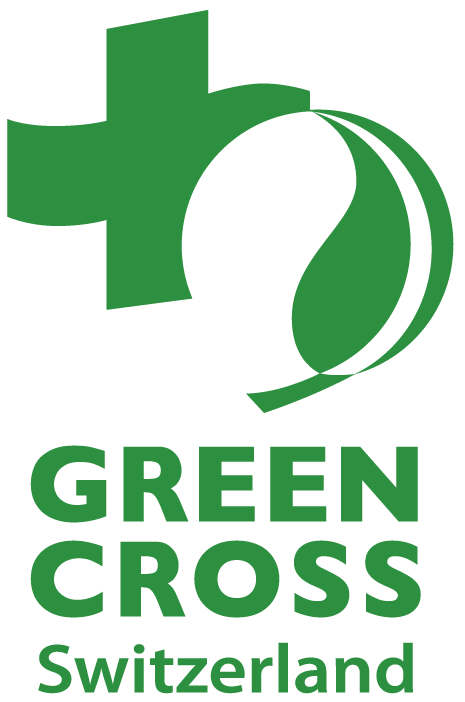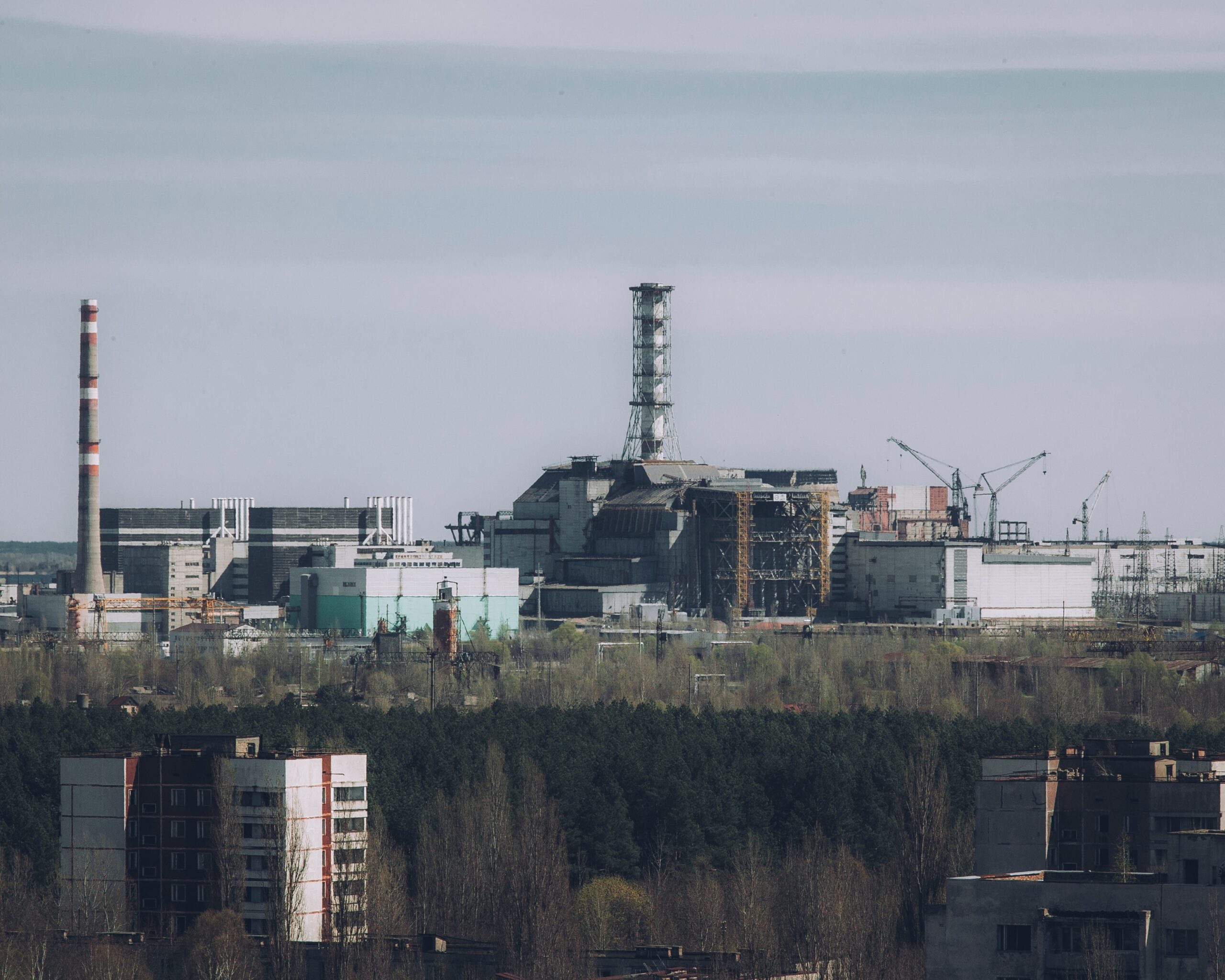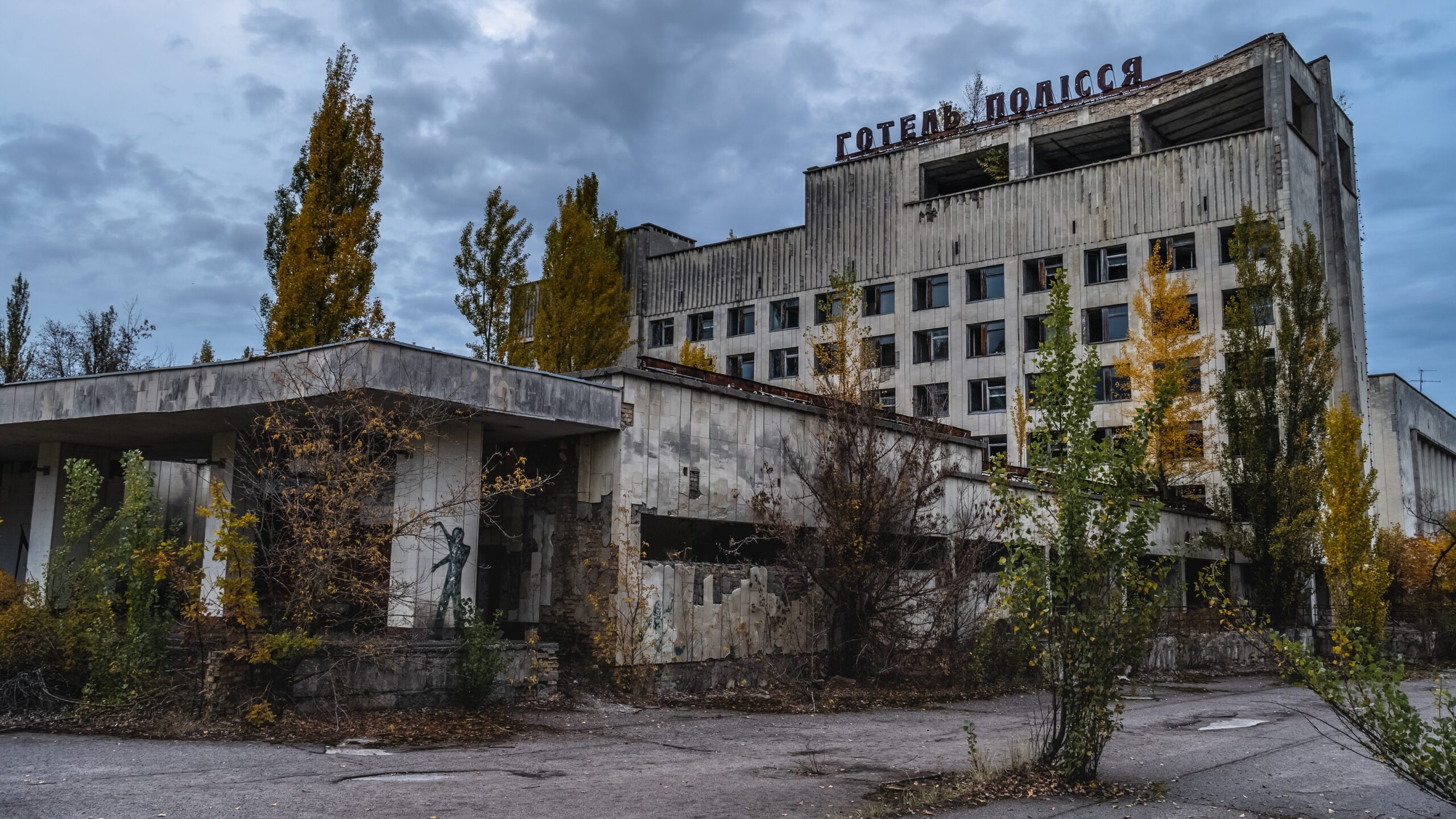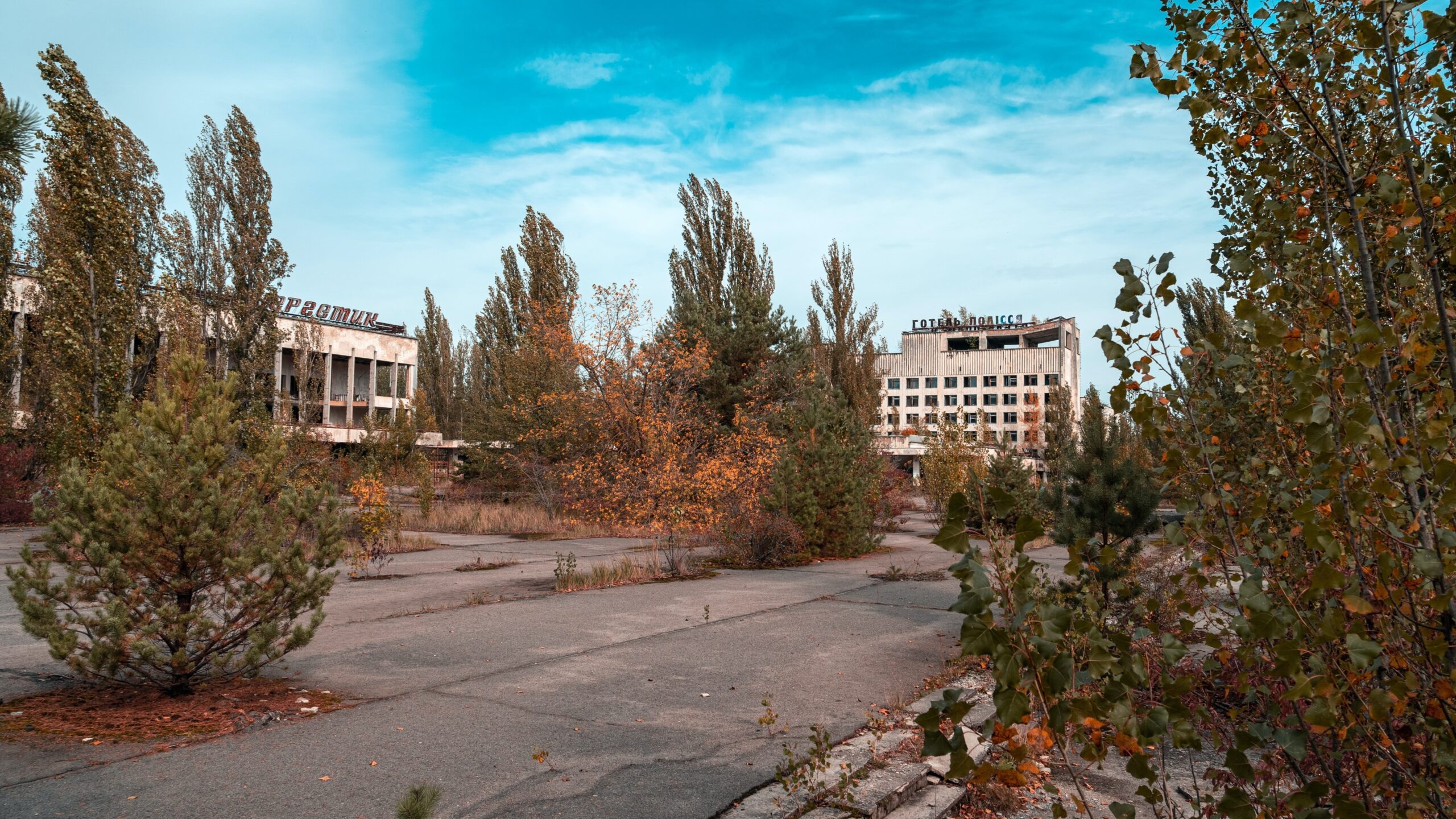Chernobyl and Kyzhtym nuclear disaster
On April 26, 1986, at 01:23, radioactive material was released in reactor unit 4 of the Chernobyl nuclear power plant due to a reactor accident. One day later, the nearby town of Pryp’yat with its nearly 50,000 inhabitants was evacuated. In order to contain the disaster, so-called “liquidators” (between 600,000 to 800,000 over time) were sent to the area to “liquidate” the radioactive radiation; covering the reactor with debris or pouring various materials from military helicopters into the reactor (e.g. lead ingots, which were supposed to reduce gamma radiation) were among their tasks. In addition, to reduce radiation exposure, a protective shell was built. The shell was renewed in 2016.
The accident, which the Soviet government initially tried to conceal and which fostered distrust in the Soviet government, quickly reached a wide world audience. Between 40 and 185 million curies of radionuclides (radioactive forms of chemical elements) were released into the atmosphere; this is comparatively many times higher than the radioactivity caused by the atomic bombs dropped on Hiroshima and Nagasaki in Japan. The released material reached as far as Western Europe, but contaminated the surrounding regions by far the most. Millions of hectares of forest and farmland in Belarus, Russia and Ukraine were contaminated.
Despite timely evacuation, hundreds of thousands remained in the contaminated areas. Many animals and humans were born malformed as a result. Further consequential damage for humans was an increased risk of cancer and chronic diseases such as diabetes. In addition, numerous psychosocial and neuropsychological concomitant symptoms appeared, these occur frequently after large disasters, such as: Mental disorders or alcohol abuse. To this day, people and the environment in areas of today’s Belarus, Russia and Ukraine suffer from the consequences of this disaster. In addition to the negative health effects caused by the released radioactivity, the reactor accident also led to social and economic neglect in the regions.
While the Chernobyl nuclear disaster occurred almost 40 years ago, Green Cross Switzerland’s work in the affected region also has a nearly thirty-year history. Nine years after the Chernobyl nuclear disaster on April 26, 1986, the foundation established the first therapy camps for young people and children in affected regions as part of the SOCMED (Social and Medical Care and Education) program it founded. The program pursued the goal of improving the health of the population in the longer term and at the same time providing further training and information for care professionals, as well as for those affected. In the therapy camps, mainly children and adolescents with disabilities were cared for and taught by doctors, therapists, teachers and pedagogues. In addition to the examination of the children and adolescents by the medical staff and the possibility of clean food, social activities were also organized to promote creativity, ecological awareness and a sense of community.
The work has been continued and expanded over the years; after the establishment of the camps in Belarus in 1995, support for affected areas in what is now Russia followed in 1998 and in Ukraine from 2000. In addition to these and other activities, Green Cross Switzerland has established cooperation and partnerships with actors from business, politics, civil society and research. Above all, a scientific approach was essential for the foundation of Green Cross Switzerland’s work. In practice, this approach manifested itself in the cooperation with various research institutes and experts from the natural sciences, humanities and social sciences. It is an intention of Green Cross Switzerland to make these studies and reports on the Chernobyl disaster available to an interested public. Below you can download some studies and reports free of charge.
Green Cross Switzerland, in collaboration with Prof. Dr. Jonathan M. Samet, Director of the Institute for Global Health at the University of Southern California (USC), has presented the first comprehensive report on the costs of the Chernobyl reactor disaster in 2016. This report provides an overview of the financial costs of the Chernobyl reactor disaster over the past 30 years.
The two studies on the health consequences of those affected by the disaster had a similar research focus. With the support of Green Cross Switzerland and under the direction of Prof. Dr. Jonathan Samet, the studies identified and classified the various physical and psychological impairments that occurred as a result of the nuclear disaster.
The Mayak nuclear disaster
Another nuclear disaster had occurred on September 29, 1957, near Kyshtym, in Chelyabinsk Oblast (USSR, present-day Russia) at the plutonium reprocessing plant (better known as “Mayak” or “Chelyabinsk-40”). Until 1989, the Soviet government refused to acknowledge the event, even though some 23,000 km2 of land were contaminated, more than 10,000 people were evacuated, and hundreds probably died from radioactivity. The secret facility had been built in the late 1940s to develop nuclear weapons. Due to the hasty construction of the plant and the still relatively new technologies, it was susceptible to damage and the handling of the technologies. Accordingly, a faulty cooling system in an underground tank where liquid reactor waste was stored could not be repaired, and the explosion released nuclear material. The released material drifted through a region with hundreds of thousands of inhabitants, and in the months that followed, hospitals filled with people affected by the disaster. A substantially increased number of cancers and deformities were the result. In addition, the disaster had neuropsychological and psychosocial consequences. After details of the event became known, the International Atomic Energy Agency (IAEA) classified the nuclear disaster as a level 6 accident on the international scale for nuclear and radiological events. Only the subsequent nuclear disasters at Chernobyl and Fukushima were classified at the seventh, and thus highest, severity level.
As a man-made disaster, Green Cross Switzerland began providing support primarily to the population living along the Tetschas River through the SOCMED program. Central part was the examination of children, offers for self-help, cooperatives etc.. In addition, pilot projects were launched, such as the promotion of solar energy 2021, which guaranteed the equipment of a village school or a family farm with electricity. However, due to the war in Ukraine, the projects were suspended.
New trouble spots: Fukushima
The most serious nuclear disaster after Chernobyl occurred at the Fukushima nuclear power plant, located 250 kilometers north of Tokyo. The central trigger was waves generated by a tsunami, which were accompanied by the earthquake of March 11, 2011. Between March 12 and 15, several explosions occurred at the nuclear plant and, as a result, a safety zone had to be declared around the plant. About 50,000 inhabitants had to leave the area. It also resulted in increased radioactivity in local food and water supplies. Since the nuclear power plant was located by the sea, the contaminated salt water had to be treated as best as possible. The long-term consequences of the disaster are difficult to assess. However, it is certain that the seawater and the food produced in the vicinity contain high levels of radioactivity. About 150,000 people cannot return to their homes and it is estimated that about 10,000 will develop cancer due to radiation.
Green Cross Switzerland, in cooperation with Prof. Dr. Jonathan M. Samet, Director of the Institute for Global Health at the University of Southern California (USC), has published a report that examines how many people have been affected by the disaster and what the long-term consequences of the accident might be.
Further information on the nuclear disaster of Chernobyl, Mayak (Kyschtym) and Fukushima
Chernobyl and the consequences
The Chernobyl nuclear disaster. 26. april 1986
Impact of the disaster on Switzerland
March 11, 2011. Fukushima-Daiichi reactor disaster
References
Alexievich, Svetlana: Chernobyl. A Chronicle of the Future, Berlin 2019.
Colmas, Florian; Stalpers, Judith: Fukushima. From earthquake to nuclear disaster, 2011.
Lochbaum, David; Lyman, Edwin; Stranahan, Susan Q. et. al: Fukushima. The Story of a Nuclear Disaster, 2015.
Plokhy, Serhii: Chernobyl: The History of a Nuclear Catastrophe, 2018.
Plokhy, Serhii: From Bikini Atoll to Fukushima, London 2022.



